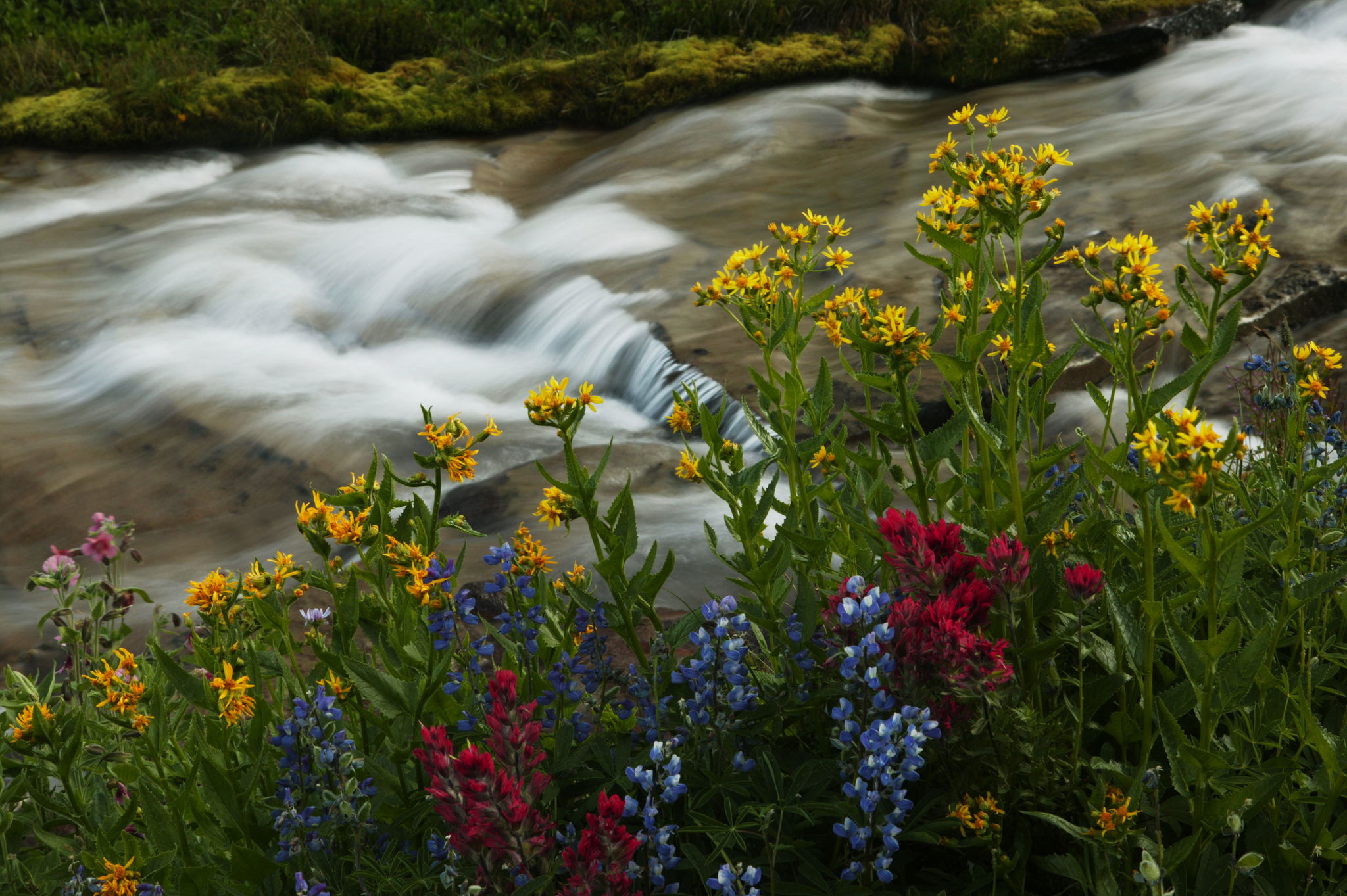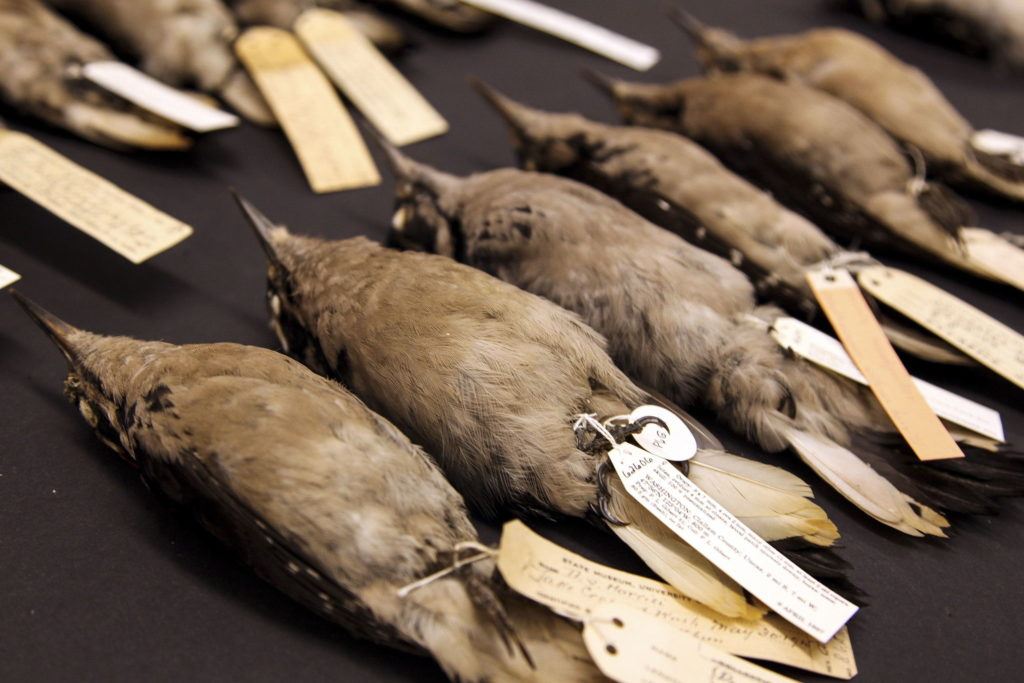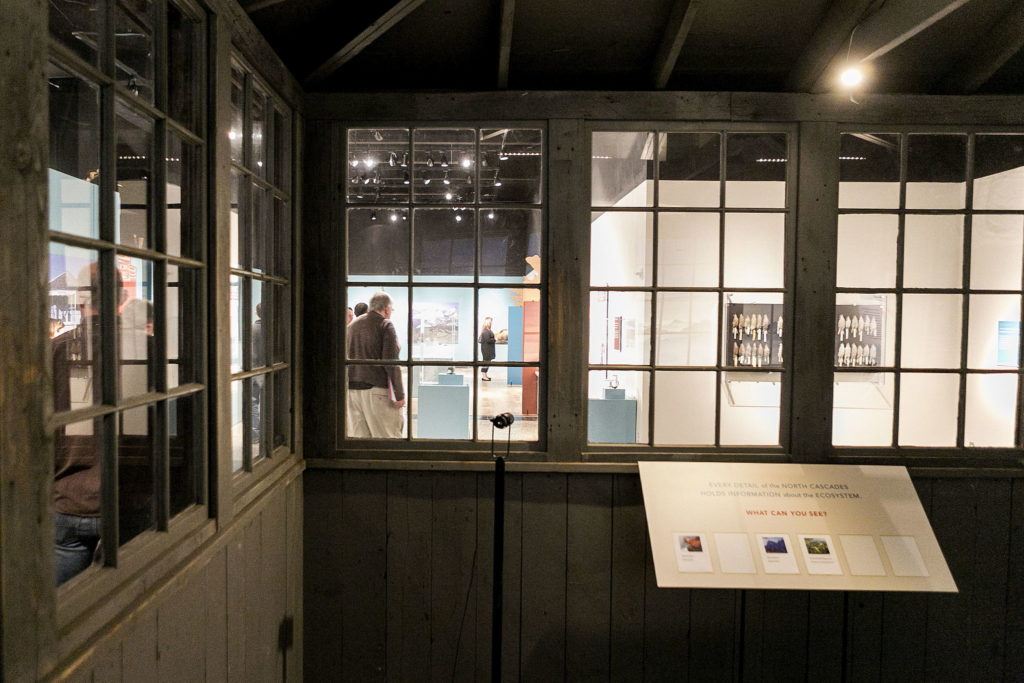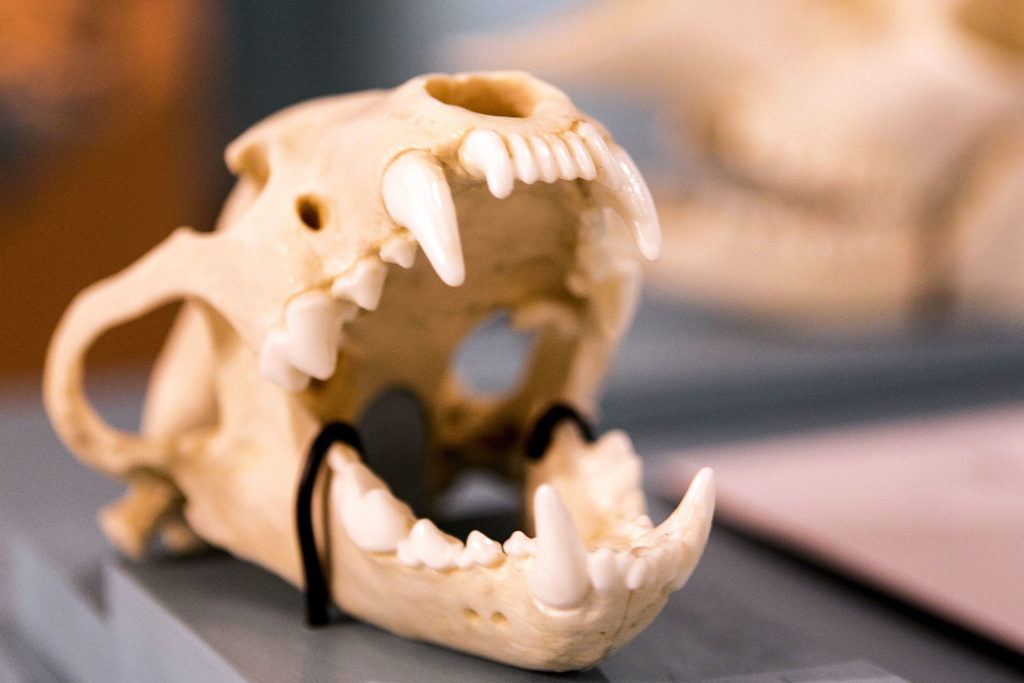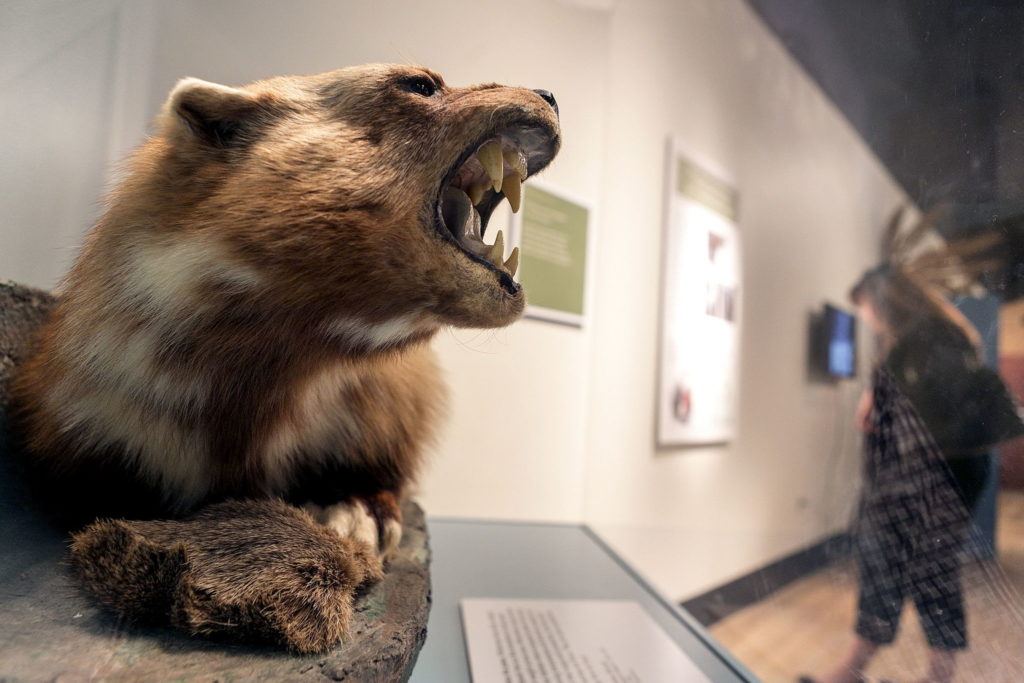SEATTLE — The Burke Museum has brought a taste of the wild North Cascades to the city.
A new exhibit, which opens Saturday, brings to life the region, using the book “The North Cascades: Finding Beauty and Renewal in the Wild Nearby” as inspiration.
The book, by William Dietrich, drew people’s attention to the amazing wild resources just a short drive from the cities around Puget Sound. The Burke exhibit does the same, while adding in the elements of the museum’s extensive collections and scientific knowledge. The book was published by Braided River, an imprint of Mountaineers Books. The exhibit is a partnership between the Burke and Mountaineers Books.
“We’re telling a distinctly Burke story of the North Cascades,” said Isabelle Heyward, the exhibit’s developer for the Burke. “It’s this beautiful, vast region with amazing landscapes and hikes. But here at the Burke, we’re really focused on the details. Everything within this ecosystem, from a rock to a leaf to a bird, holds information about the surroundings. And we document and examine those details. This project has really given us a great opportunity to highlight some current research projects that are happening here at the Burke.”
One of those projects is a long-term study of bird populations. Scientist John Klicka is studying how bird populations are isolated by mountains and how those different populations interact.
To illustrate that study, the exhibit shows about 40 hairy woodpeckers, a species that is found in the North Cascades. It’s possible to tell by their belly color where the birds were born. Those with dark bellies were born to the west of the Cascade Crest; birds with white bellies were born to the east. In the middle, where the two overlap, the woodpeckers have medium-colored bellies. The number of examples make the point clearly — and highlight the vastness of the Burke’s collection. (Interesting note: One of the dark woodpeckers was collected in Everett in 1933.)
“We have a wide breadth of collections represented and visitors will have an opportunity to dive into these details of the North Cascades,” Heyward said. “It’s a really great opportunity to showcase the strength of the Burke’s collections.”
Klicka chose the hairy woodpeckers for a specific reason. He studies many birds, but in populations the differences can only be seen through genetic analysis. The hairy woodpeckers make the difference immediately visible and understandable.
Klicka hopes to eventually be able to understand what affect being a hybrid between two populations has on the offspring.
Another highlight of the exhibit is a reproduction of a fire lookout. Artist Tori Karpenko built it using reclaimed wood.
The lookout is based on a structure that once stood on Crater Mountain. It has the feeling of a structure from the 1930s or ’40s. The structure is 14 feet by 14 feet and visitors can walk in and imagine themselves on top of a mountain.
It’s not hard to do. A huge painting shows the mountains, as they appear looking east from Crater Mountain.
The painting, visible through the lookout, is a breathtaking work of art. The details are amazing. Up close, it’s clearly a painting but from a distance it looks like a photo.
Other elements of the exhibit include huge, beautiful photos from “The North Cascades” book.
A selection of archaelogy and geologic displays tell the history of the North Cascades.
“It’s a great opportunity to share the culture and history of the Upper Skagit Tribe,” said Scott Schuyler of the tribe.
The exhibit includes artifacts such as tools that were used by the ancestors of the Upper Skagit Tribe. The tools are thousands of years old. They came from an area in the North Cascades where more than 60,000 artifacts were discovered. The Burke is helping to curate the items for the tribe.
While many of the exhibits are behind glass — the tribal artifacts and an impressive wolverine specimen, for example — some are available to touch. Kids will enjoy the replicas of wolverine, coyote and deer skulls. They make it very easy to visualize how the animals use their teeth differently.
Wolverines have been the subject of a recent 10-years study and the Burke is the repository for the materials from that study. See — and even more impressively, hear — what a wolverine looks like when caught in a log trap.
Another video shows the coastal tailed frog. Burke scientists are working on a study of the frogs, to determine whether dams on the Skagit River are causing changes to the populations on either side of the dams.
The frogs are an ancient species. The video shows them jumping and swimming. Neither motions are very graceful. The jump is particularly unorganized. The frogs leap, land on their bellies, and then gather themselves up for another go. Kids will be fascinated with this video.
“The North Cascades are 90 miles away,” said Julie Stein, the executive director of the Burke. “But for those with no cars or no means, 90 miles is huge.”
She said the exhibit is a way to bring the North Cascades nearer to those who can’t go there. Even if they never go, Stein said, she hopes the exhibit helps them see other places, such as their local park, in a different way.
Jessi Loerch: 425-339-3046; jloerch@heraldnet.com.
If you go
Wild Nearby, a new Burke Museum exhibit, has an opening day event from 10 a.m. to 3 p.m. Saturday. The event includes exhibits of outdoor gear, a climbing wall, a variety of specimens that can be touched, games, activities for kids and more. At 11 a.m. guidebook author Craig Romano will talk about his favorite hikes in the North Cascades. At noon, hiker and climber Steve McClure will talk about navigating with a smart phone.
When: The Burke is open 10 a.m. to 5 p.m. daily. The exhibit is open through Feb. 5, 2017.
Where: 4334 Memorial Way NE, Seattle
Cost: Admission is $10, $8 for seniors, $7.50 for students and youth, 4 and under free. Admission is free the first Thursday of each month.
Online: www.burkemuseum.org
Talk to us
> Give us your news tips.
> Send us a letter to the editor.
> More Herald contact information.
